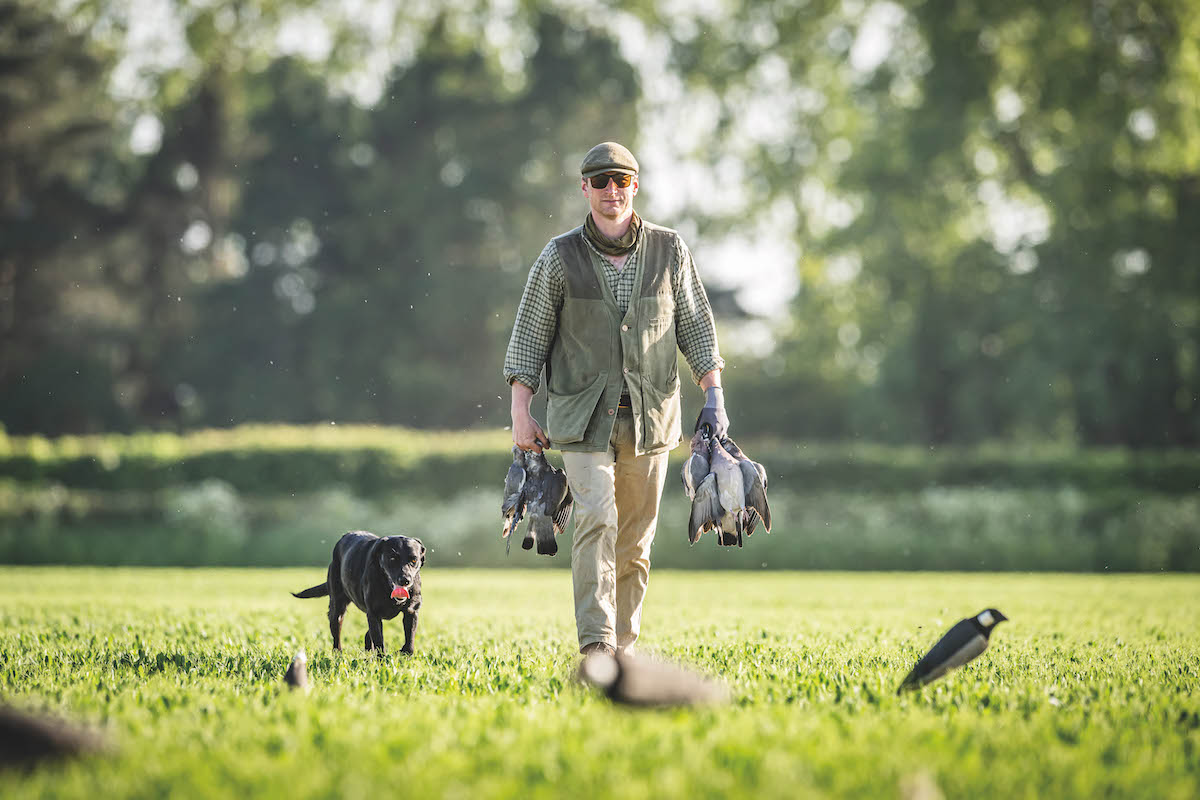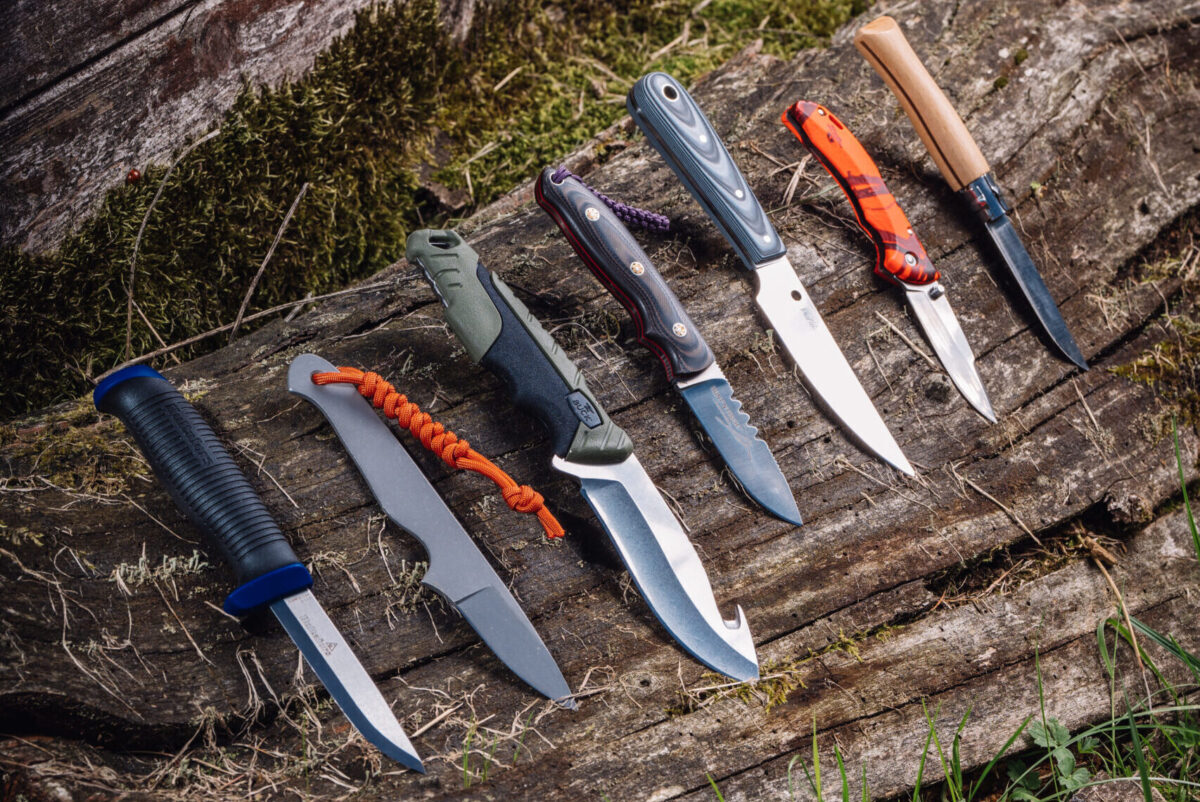Keeping an eye on your performance
Shooting glasses are now big business, and Simon Reinhold asks if they can really improve your results on clays and game

Simon previously resorted to just using sunglasses, but he now prefers proper shooting glasses
If you’d asked me 30 years ago if wearing shooting glasses would make any difference to my shooting, I would have thought the question slightly ridiculous. Certainly, back then if you rocked up at your local straw-bale clay shoot wearing what we now consider the most popular brands, many would think that you had ripped off the visor of a passing cosmonaut, but a lot has changed in that time. The Americans have worn glasses to shoot for much longer than we have. Watch a 1970s cop movie of your choice with a shooting range scene and you will see yellow lenses (predominantly) with deep hook frames underneath bulbous ear defenders.

Simon Reinhold has found his performance has improved when using good-quality shooting eyewear – for both clays and game
As British society became more litigious, it became more safety-conscious. The health and safety industry rose to prominence in the workplace and that migrated to leisure time also. Then someone suggested that the Sunday straw-baler really ought to consider some kind of insurance cover, and when they found out they were being asked to insure a pastime involving firearms and falling shards of clay, glasses became more than just a good idea, they became part of the price of admission. The performance eyewear industry was born and this has grown to be big business.

Red and orange lenses are commonly used on the grouse moors, filtering out blue light and making images appear sharper
Positive effect
I almost always wore my ordinary shatterproof sunglasses for clay shooting, but for some time I have noticed a trend of shooting better when I have worn clear lenses.
It was particularly noticeable when the light wasn’t good and sunglasses clearly were not the correct choice; I would switch to a pair of cheap clear safety glasses of a brand I found comfortable.
This apparent positive effect on my form was highlighted the first time I ‘straighted’ (25/25) the often highly challenging Sportrap layout at my local ground. I had wanted to do this for a long time. There are sporting world champions for whom this layout is not easy to straight, so it was something of a milestone for me.
Sadly, a high-end pair of glasses is one outlay I can’t justify. Instead, in the lead-up to a tilt at the English Open Championship (my first), I felt the need to upgrade a little to better-quality clear lenses that would scratch less easily than entry-level clay glasses. With this decision to go for slightly better glass, I felt I could see the clays far more easily than I had previously. Going for a higher-end pair of glasses gave me a perceived extra gear and it showed with a 10 % rise in my scores in the lead-up to the competition and the event itself.

Shooting glasses are now a must when clay shooting – for performance and safety
Visual performance consultant and one half of Edwards Eyewear Ed Lyons says the same principles apply to clear lenses as they do to coloured ones: “Historically, safety lenses for shooting have been made from polycarbonate, which is impact-resistant, lightweight and inexpensive. The downside is that optically polycarbonate is not particularly impressive as the material can create distortions reducing the clarity of the lens. Vision and shooting are intrinsically linked; you can’t hit what you can’t see so scrimping on lens quality is a false economy.”
I am a game shooter who is now shooting more competition clay targets. Many of us do not take well to coloured lenses, and our visual acuity is more aligned with clear images rather than tinted ones after a lifetime of wandering hedges and foreshores. But clear is not always the best option. There are some highly regarded clay Shots who struggle to pick out orange ‘blaze’ targets against a green background. While they have tasted success in competition, it has been a hindrance for them. There is no doubt that if you are one of the one in 10 men who have a red-green colour deficiency (it’s much rarer in women, approximately one in 400), then a trip to a sports vision specialist is going to be a sound investment.

Yellow is a popular choice for low-light conditions, adding significant contrast
Wavelengths
What a coloured lens does is prevent some colours from passing through a lens while at the same time promoting other colours. The colour of the target itself, interestingly, is not what we think it is. What we might perceive as orange is in fact the wavelength of light that isn’t absorbed by the coating on the target and is instead reflected back at us as we look at it.
“Coloured lenses can’t ever make a colour-deficient person see true colour, but it can help them differentiate that the object of regard is different from a green background,” says clay coach Ed Solomons.
Those new to clay shooting are often very keen to find out which of the myriad of lens choices is going to be right for them. Sadly – and I am not trying to justify my own miserliness here – the truth is that until you achieve a certain level of proficiency with your technique and with your knowledge of when differing techniques should be employed, lens choice is unlikely to alter your scores in a meaningful way. In the same way that a gunfit is wasted on someone with an inconsistent gun-mount and stance, top-of-the-range glasses are going to be a disappointment to anyone without sound technique in other areas.
Which tint is best?
Information on which particular tints suit which scenarios is surprisingly hard to come by for the would-be purchaser. My own personal preference is clear and many also find that clear lenses are good for shooting in woodland. Grey lenses are best for extremely bright days or that stand that happens to have the sun in the path of the clay when it is your turn to shoot.
Amber, vermillion, a darker or lighter brown are useful all-rounders adding some contrast, which can make your field of vision a little sharper. Yellow is very popular for low-light conditions and can add significant contrast. It is often the option chosen for shooting among the trees but is much less suitable on very bright days for all the reasons it is popular in dull conditions.
Red, rose and orange are perhaps the most often seen colours used by clay shooters (and some game shooters, especially on grouse moors). These colours filter out blue light from one end of the visible light spectrum. This will make images appear sharper to your brain as it processes the information arriving. An orange lens can be best to pick out orange clays against wide skies, while a red or rose tint can be best for orange clays against a darker background. They are suited to overcast days, and some find them useful adding contrast and definition, especially when the eyes are tired at the end of a long day.
Purple is considered a good all-rounder. It can neutralise the background as it can reduce a green or brown background and can allow a shooter to see a moving object against a dark background. Many find it a good option for game shooting too.
Whichever lens colour you choose, it is important to make sure that the shape of the lenses suits your face and, crucially, your gun-mount. They might fit well as you stand upright in the gunshop, but if the bottom of the lens touches your cheekbone as you mount the gun they are going to be a distraction. It is important to find this out before parting with your cash.
Glasses to consider

PILLA
Pilla dominates the shooting glasses market to such an extent that it is easy to forget this company has only been with us for around 20 years. Cleverly, it partnered with Zeiss and in so doing it has access to a century and a half of technology and expertise when it comes to light passing through glass. They are some of the most expensive on the market but here you really do get what you pay for. With a huge variety of lens choice and prescription options alongside, they are widely regarded as the best around for the world’s top clay Shots.
RE RANGER
Favoured by some world and Olympic champions, each lens tint is developed with specific conditions in mind to help shooters see further, faster and with precision.
 EDWARDS EYEWEAR
EDWARDS EYEWEAR
For the style-conscious – because let’s face it some of the other brands are functional rather than beautiful – Edwards Eyewear is worthy of consideration. It’s the brainchild of Ed Lyons and Ed Solomons, so you are reaping the benefit of one of the best eye vision experts (Lyons) and one of the most highly regarded clay shooting coaches (Solomons).







